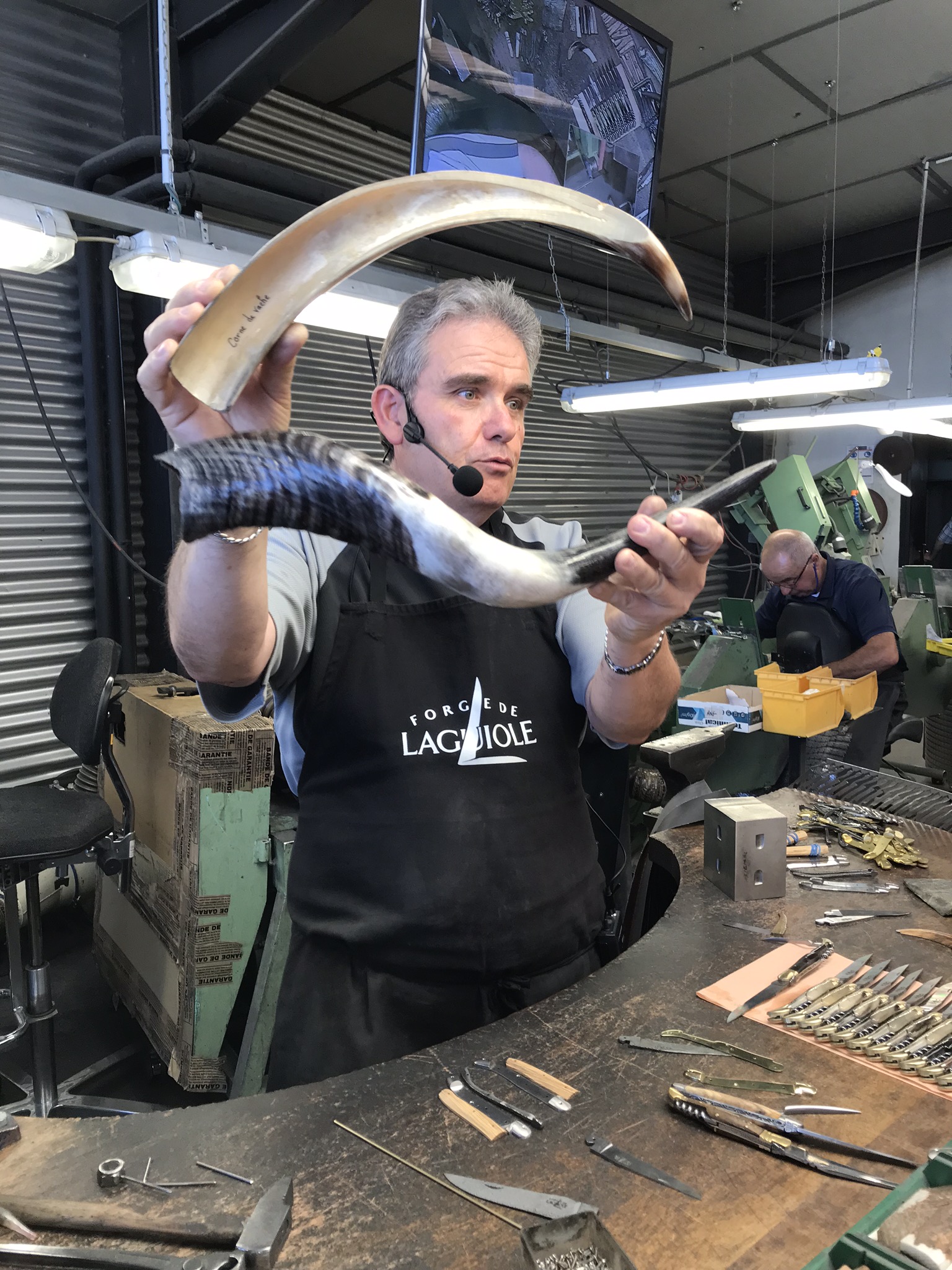La Forge de Laguiole
This place is so remote it seemed like yet another pilgrimage.
Neither Mark not I had ever been to the Auvergne region of France, so we though we should check it out.
It’s a very hilly region on the southern edge of the Massif Central, so the Tour de France comes through pretty often. We intersected the course on Stage 10 from St Flour to Albi near Lacalm, a few weeks after the event had passed.
The fans’ chalk writing was still all over the road on the way up one particularly steep hill.
Eventually, we arrived in the village of Laguiole which was swamped with tourists enjoying their overpriced lunches in the various cafés around the main square.
We headed out of town to the factory where the Forge de Laguiole knives are made. La Forge de Laguiole is just one of the many manufacturers of the “Laguiole-style” pocket knife. Production of these knives are centered around the village of Laguiole and nearby town of Thiers.
The boutique at the front of the factory is bisected by a giant steel knife blade. The windows at the back of the sales floor look directly into the open “atelier” where some of the master knife makers are busy at work.
Here’s the rest of the knife blade popping out of the top of the building. Clearly Philippe Starck was channeling Claes Oldenberg when he designed the building!
Every half hour, they run a free tour through the factory. We started in the room where all the necessary pieces are stamped out of the various metals used in making the different folding knives and straight table knives.
These are “platines” or central tangs for the folding knife. Hey, knife geeks. Don’t give me any grief about this knife terminology. The tours are all in French.
This handy board shows all the components of a traditional 3 piece folding knife. The shepherd’s pocket knife included 3 essential utensils, a blade for cutting bread and saucisson, a corkscrew for opening wine and a “poinçon” for piercing the bellies of bloated sheep in the field. This last utensil is not as common as it used to be, but all laguiole-style folding knives still feature the “croix du berger” or shepherd’s cross on the handle as an homage to the knife’s origins as a life-saving tool.
We moved on to the forging area where the stamped metal is hardened in preparation for the next step.
As the following station, the knifes are thinned into a beveled edge so they can be sharpened later on. This operation is mostly automated now, but back in the day, workers had lie face down over rotating stone wheels to use the force of their own weight to grind the knife edge. Evidently, there wasn’t a stream powerful enough to turn the wheel using water power, so they used dogs in hamster wheels. Talk about animal cruelty!
Once all the parts are made, they arrive in a set to the knife builders. Each knife is assembled start to finish by one artisan at his or her personal station. It takes about 2 years of apprenticeship to learn how to properly build a simple table knife and several more years to learn the basics of folding knives. As each knife builder gains experience and knowledge, they can request to be apprenticed to a more senior knife builder to learn the more complex knives such as the 2 and 3 utensil folding knives.
After the tour, we watched a demonstration of the “montage” of a folding knife.
We learned a little bit about the different material used to make the handles as well as some helpful hints for spotting poor quality, “fake” laguiole-style knives. Once you know what to look for, they’re not to hard to spot.
Once the knife is assembled, the handle and the metal parts are sanded down and refined into their final shape on progressively finer belts. This part takes the longest to learn and requires total concentration.
The polishers complete the last step in the process. They wear a protective apron when they move to the sharpening wheel. Yikes!
The 60 or so artisans at La Forge de Laguiole finish only 400 pieces per day all told.
I was eyeing these knives and forks, but we opted to buy Mark a nice folding knife instead. Happy Birthday, Mark!
On the way out of town, we stopped to admire the beautiful Aubrac cattle grazing around the countryside.
This one was just wandering up the road. What a pretty girl!
Looks like a pretty nice place to live if you’re a cow.

























